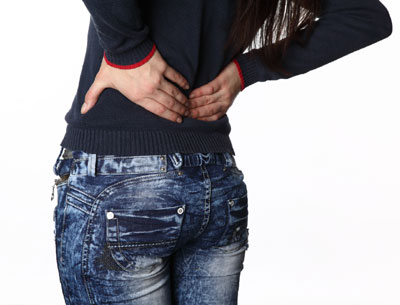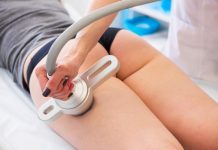Our back doesn’t like when we spend a lot of time sitting, standing or walking in upright position. How to keep the back straight without starting to crawl on all fours? We all remember how teachers at school were saying about sitting upright. As we grew older, our colleges advise us to go to a back specialist. Many of us do not take the advice. Later, we wonder at unbalanced shoulders, ribs sticking out abnormally and sharp backache. What can we do about it?

Types of Scoliosis
First, you have to know that all posture disorders start with scoliosis. There are other variations of abnormal curvature of the spine – kyphosis, lordosis, kyphoscoliosis and lordoscoliosis – that occur less frequently. They differ in the region of the spine where abnormal curvature takes place.
Scoliosis and Intervertebral Discs
Scoliosis is a lateral curvature. While healthy spine should be straight, scoliosis is a condition that causes the spine to curve to the left or right side. Most often the spine assumes S-shape. Changes don’t stop here. Uneven distribution of body mass causes spinal vertebrae turn around, which increases the stress on intervertebral discs.
How to Prevent Scoliosis in Kids
As with any other condition, scoliosis starts in the childhood. So make sure you don’t overlook this problem in your kids. Many parents forget they can examine the spine of their kids themselves without going to orthopedist. Ask your kid to bend and run your hand along the spine. The line should felt straight. If you feel some curve, it’s better to bring your kid to the orthopedist’s office.
Posture Rules for Kids
It’s important to make sure your kid sits upright in a chair and the kid’s furniture is comfortable. Nearly all early curves of the spine could be repaired by exercising because until 15-16 years old children’s spine is still elastic.
Flat Foot and Scoliosis
Scoliosis is very often caused by flat foot. That’s because our feet act like a shock-absorber when we walk. As we spent a lot of time walking – and women wear high heel shoes – our feet can’t withstand so mush pressure, which results in flat foot condition. With flat foot, our spine assumes the role of shock-absorber. Added load curves the spine and scoliosis develops. Orthopedist should detect flat foot in time and advise on the right massage, exercise program, orthopedic inner soles and footwear.
Back Conditions in Adults
Adults who spend much time in a car or sitting in front of a computer also suffer from back conditions. You can avoid problems with your back, at least partially, by right distribution of the load in a car and in the office. What is right posture?
Correct Posture in a Car
- You freely reach and fully push pedals with your legs bent at 120-150-degrees angle.
- The wrist of your left hand touches the upper point of a stirring wheel.
- Your back leans against the seat.
Doctors do not recommend moving driver’s seat too far from a stirring wheel. If you drive with your back hunched up, it will lead to uneven distribution of the load to your spine. Eventually, it results in the curvature of the spine and herniated discs.
Orthopedic low back pillow may help to lower the risk of these conditions.
Correct Posture in the Office
The correct posture in the office includes the following rules. Seat only in computer seats with shock-absorbers and adjustable seat pan height and backrest tilt. Place the monitor 20-27 inches away from your face with its centre no more than 2 inches below your eyes. You may inform yourself about how to sit correctly in front of your computer in article about back health.
Exercise for Healthy Back
You can do simple exercises to rest your back without even having to rise from your office seat. For example, the following exercise. Sit in the middle of your chair without leaning against the backrest with your feet close to each other and knees bent at 90-degree angle. Place your hands along the trunk and try to move the crown of your head up. Relax and repeat the exercise 10-12 times.
Source of the image: telegraph.co.uk.











